General

Outdoor Learning Engagements

Outdoor Learning Engagements
Litter Picking at Wu Kai Sha Main Beach
These K2 children and their parents have joined us in taking action to clean up our local area. In doing so they have thought about the impact dropping litter has on our environment and on land and sea animals. They have also developed their understanding that items are made out of different materials and that some materials, like plastic and metal can be recycled. They have taken action to recycle many of the items collected from the beach.
Litter pickers are available for hire from the school library by prior arrangement with the school office or Mrs Kerry Ngao. We have been using grabbers as our litter pickers as they help to develop children's muscle strength and fine motor skills. BBQ tongs work very well as well. We want our children to understand what it means to be a responsible global citizen. One small litter picking trip, one weekend, with your family makes a big difference to their understanding and our World.
Transient Art at United World College, Lions Nature Education centre or any wild space
As the word indicates, transient art is impermanent. In other words, the piece of art created is movable and transferable. Often loose parts and open ended resources are used in order to encourage children to use their imagination and creativity without limitations.
At United World College we used sticks, leaves, pine cones and anything else we could find on the floor for our collections.
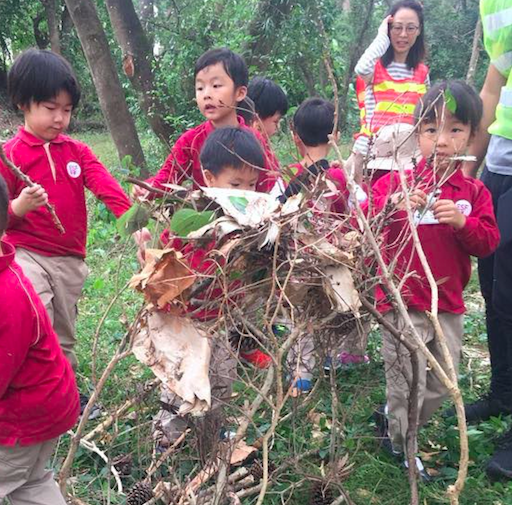
At Lions Nature Education Centre we looked carefully at the form of a variety of familiar insects and used natural materials to represent them.
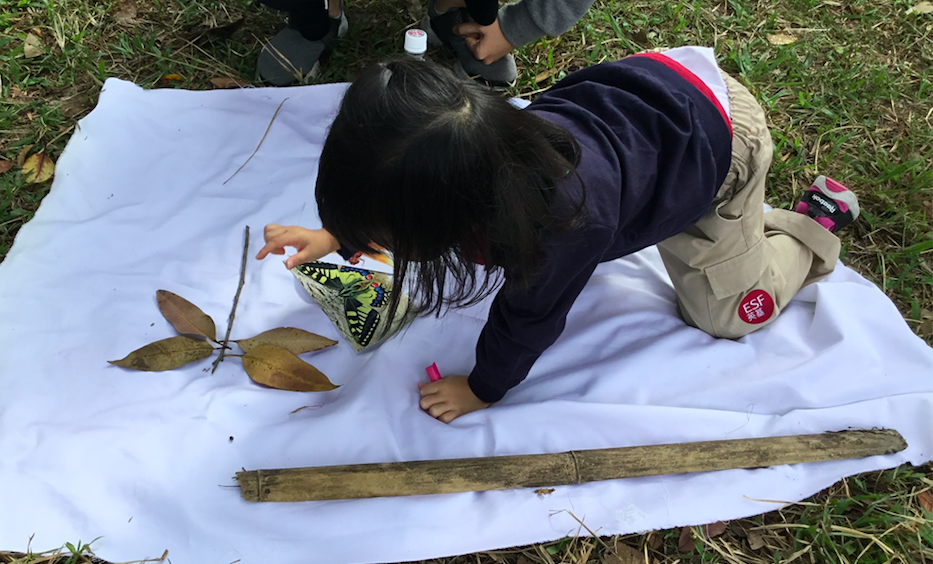
These types of open-ended materials allow children to manipulate, explore and experiment with lines, forms, patterns and shapes in a completely process- orientated way.
"Loose parts promote creativity and divergent thinking. Creating art and designing with a variety of loose parts stimulates children's curiosity and inventiveness." Daly, L. & Beloglovski, M
Hiking up Ma On Shan
After attending our Outdoor Learning Parent Workshop one of our K2 parents had the confidence to take her daughter on her first hike.
"It’s a steep haul to the top of one of Hong Kong’s most distinctive peaks, but the views on the way up, and from the top, are worth it, and you’ll feel a world away from the skyscrapers below." South China Morning Post
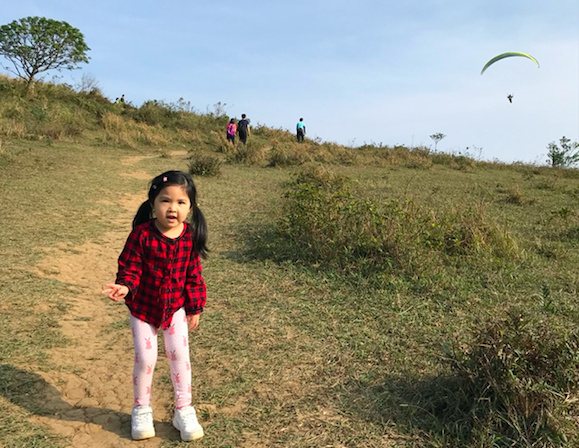
Our K2 family didn't climb all the way to the top but they didn't need to. The views and the experience were amazing.

Games at the Basketball Courts
Trips to the local Basketball Courts offer children a large space in which to be physically active. Regular physical activity is an important part of getting healthy and staying healthy.
Encouraging children to be active from a young age sets good habits early on and helps them develop the skills they need to stay active throughout their lives.
Regular Physical Activity helps children:
So far this school year many classes have taken part in a variety of learning engagements at the Courts.
Parachute games are non competitive and encourage cooperation and turn taking. They require children to actively listen in order to follow directions and help develop a sense of rhythm and build upper body strength.
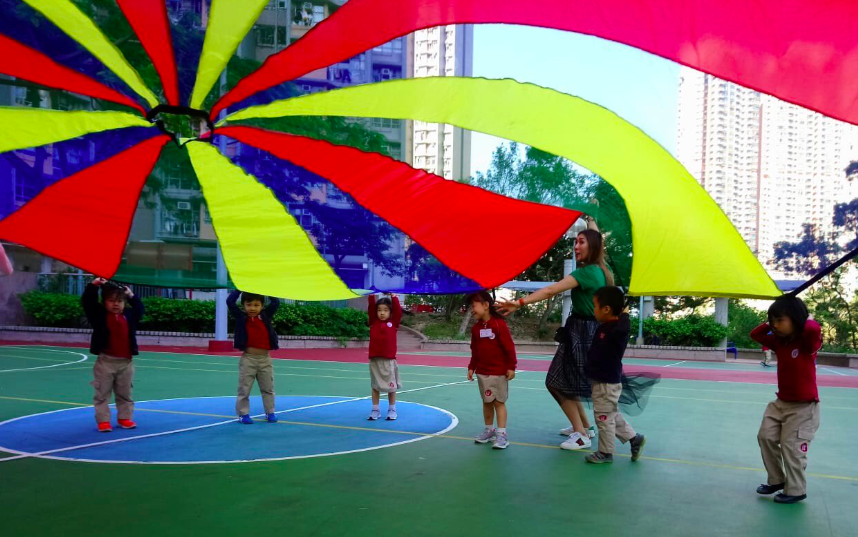
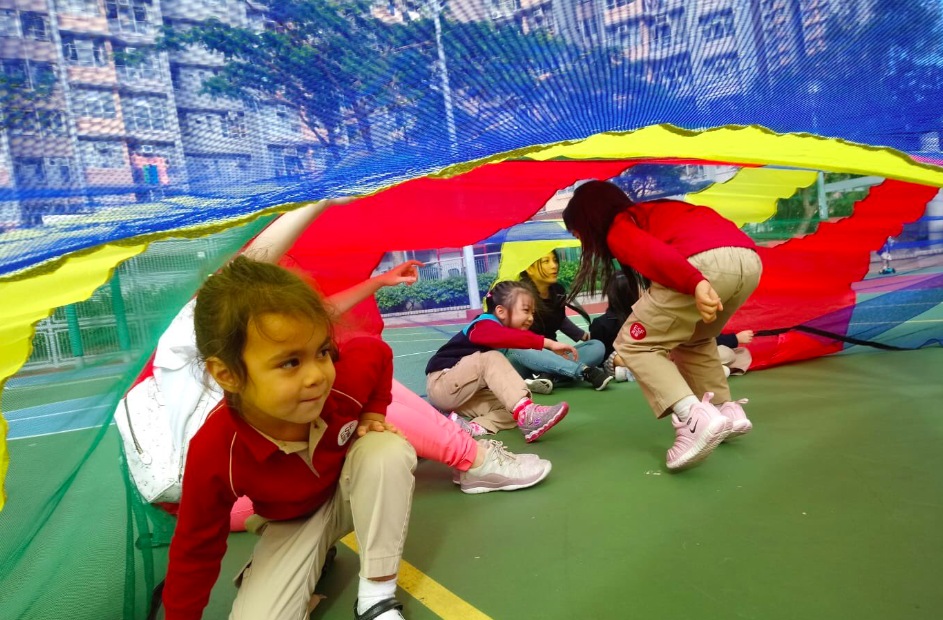
Scooting comes with many health benefits. Scooting requires the rider to use the arms and legs independently from each other helping to fine tune their motor skills. One foot kicks while the other balances, and the hands are on the handlebar balancing the scooter. All this occurs while the head and eyes are watching where they are heading and looking around for possible obstacles. Balancing on a scooter requires core muscle strength, propelling the scooter with the foot requires leg strength, and the quick decision making skills require mental strength. Being able to steer, kick, balance and brake simultaneously works wonders for a growing child’s coordination. Scooting requires critical thinking and decision making skills, including when to slow down, when to stop, when to turn, how much to lean into the steer without falling over, looking out for obstacles and deciding how best to avoid them. Scooters are a great way to help children learn to make decisions, and weigh their options quickly. (Health benefits of scooters)
Not all children feel confident scooting but seeing their school peers having a go first can give them greater confidence.
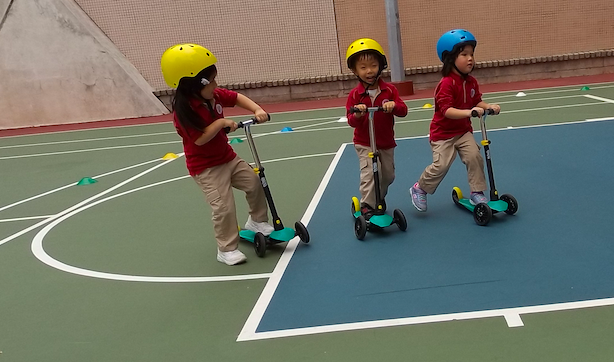
Not all parks in Hong Kong allow scooting. The Shing Mun River is good for cycling along. There is also an 'Adventure Cycling Arena' between Shek Mun and City One stations.
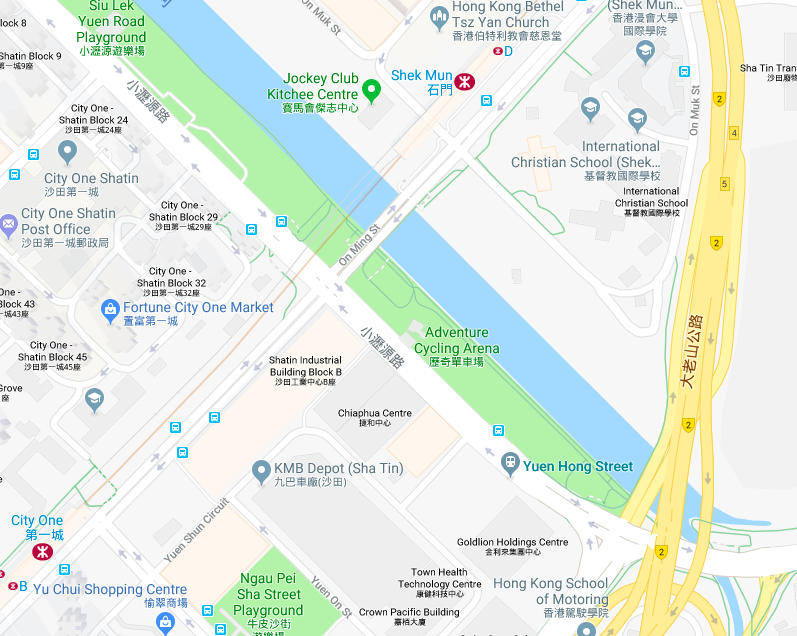
Back to top